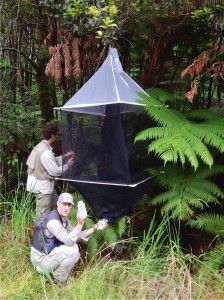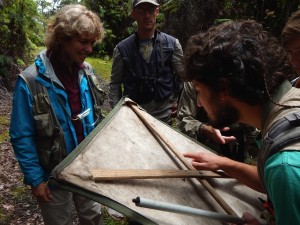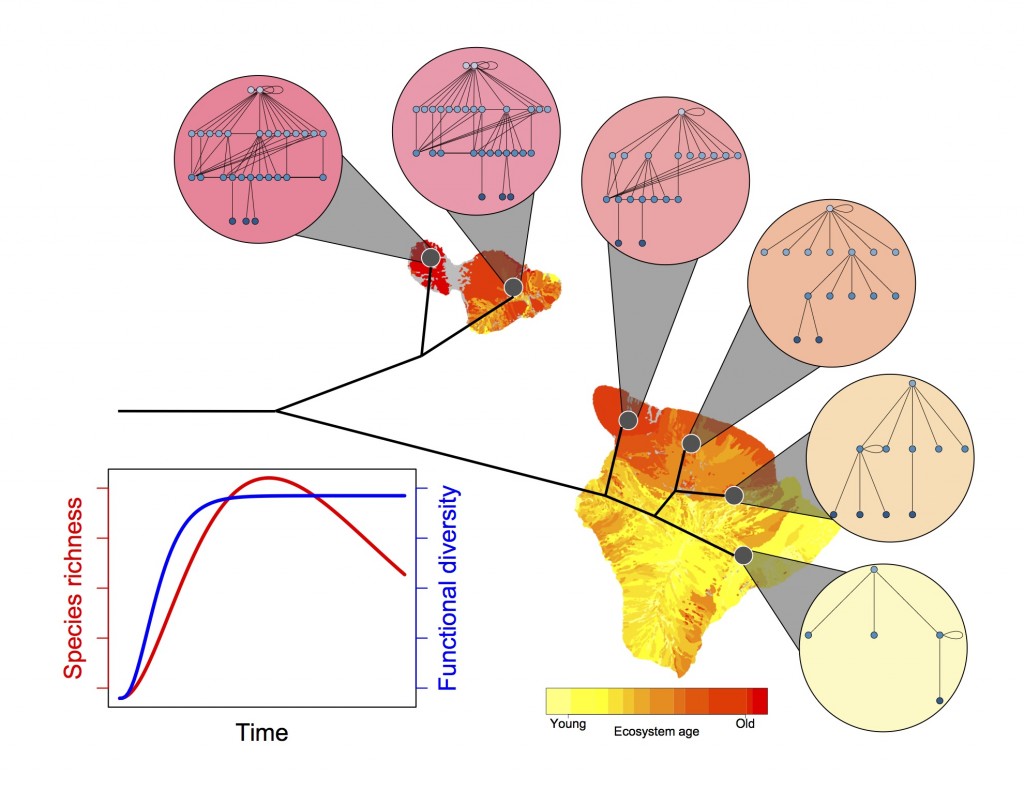
Understanding how ecological and evolutionary processes synergistically determine biodiversity patterns remains a central goal in biology. In highly isolated archipelagoes such as the Hawaiian Islands, beyond the reach of frequent colonization, rapid in situ diversification has the potential to keep pace with ecological dynamics such as biotic filtering and demography. Using ecological theory as a conceptual guide and data from multiple arthropod lineages across the Hawaiian model system, we explore how complex communities emerge from the interplay of ecological (population dynamics, dispersal, trophic interactions) and evolutionary (genetic structuring, adaptation, speciation, extinction) processes. We advocate for combining perspectives gained from coupled molecular and community-level data analyzed in the context of ecological theory.
We merge two very different areas of research to understand patterns of biodiversity, (1) a broad ecological approach focused on particular locations, which provides insights into how species assemble and interact in an ecological community, and (2) an evolutionary approach, which examines how a given species group adapts, multiplies, or declines over time. The first approach addresses the diversity and abundance of species at a site and what are the kinds of predator-prey or other interactions between species. The second approach allows assessment of the rate at which a given lineage of organisms can adapt and diverge, including changes in abundance through time.
Broader Impacts

The particular importance of the work is that it will provide understanding of how communities come together, and the role of ecology (migrating into a community, trophic level) and evolution (adaptation and speciation) in determining the composition of species in a community. This in turn will provide information on sensitivity to invasion and probability of speciation and extinction.
Most team members have studied Hawaiian insects and spiders for a decade or more, and this research will certainly add to our basic knowledge of the evolution and ecology of endemic species. New taxonomic discoveries are almost certain, and ultimately the research will yield open access data and detailed species lists for each of studied sites.

